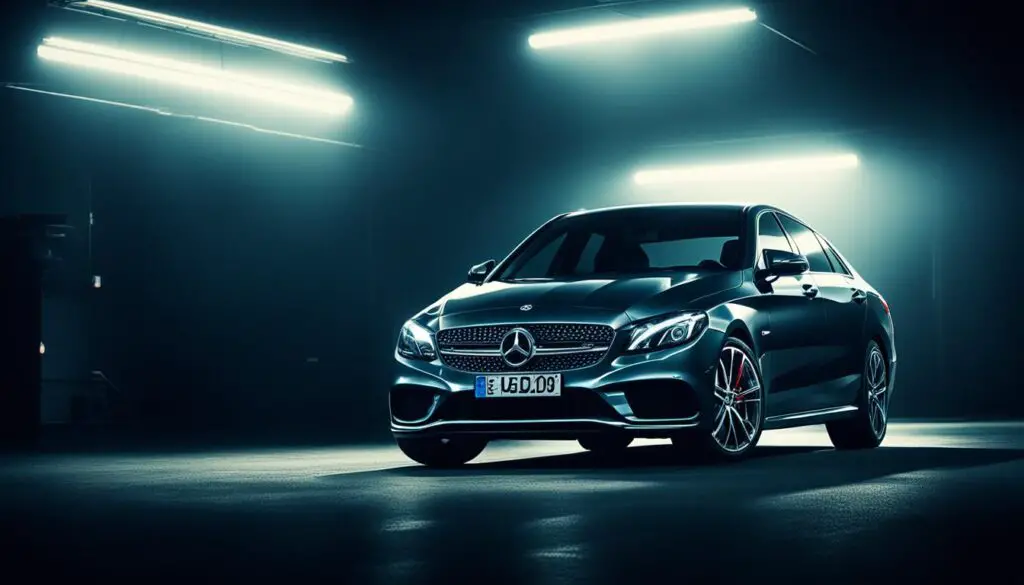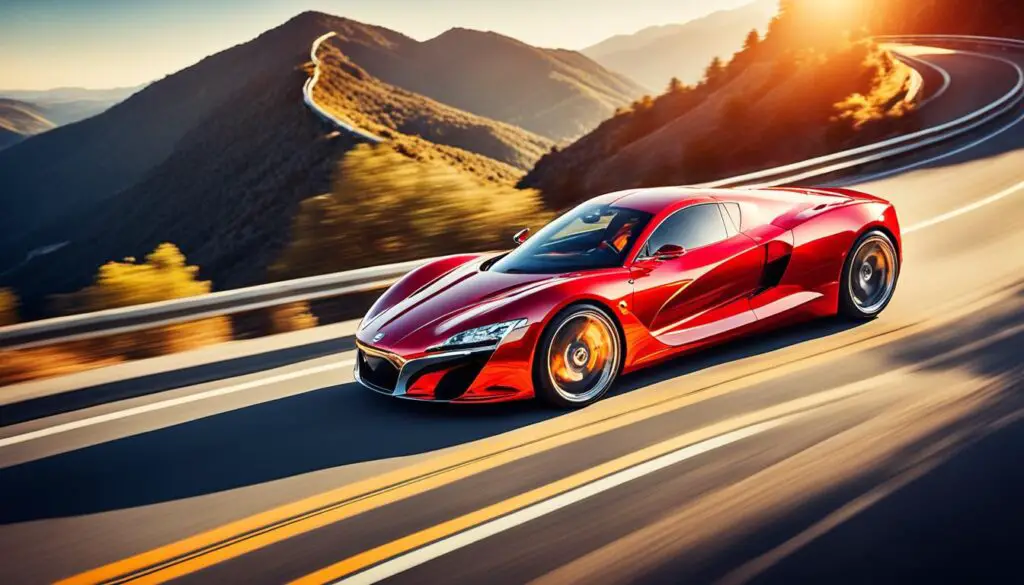
Capture Memories: Mastering Automotive Photography Tips and Tricks
Are you passionate about automotive photography? Do you dream of capturing stunning images of cars that rival professional-level results? Look no further! In this article, I will share essential automotive photography tips and tricks to help you elevate your skills and create memorable car images.
Automotive photography is a unique genre that requires specific techniques to showcase the beauty and innovation of automobiles. By mastering these tips, you can capture breathtaking shots that truly capture the essence of the vehicle.
Throughout this article, I will draw on factual data from various sources, including the renowned Mercedes-Benz Museum in Stuttgart, Germany. So, you can trust that these tips are tried, tested, and cultivated by those who understand automotive excellence.
Key Takeaways:
- Understand lighting and composition to enhance your automotive photographs.
- Experiment with different shutter speeds to capture motion or accentuate fine details.
- Utilize post-processing techniques to refine and optimize your images.
- Pay attention to the rule of thirds, leading lines, and other composition techniques for aesthetically pleasing photos.
- Adjust exposure, contrast, saturation, and apply selective edits in post-processing.
Understanding Lighting and Composition for Automotive Photography
When it comes to automotive photography, lighting and composition are two fundamental elements that can significantly elevate your images. By understanding and effectively utilizing lighting and composition techniques, you can capture stunning car photographs that leave a lasting impression on viewers.
Lighting:
Properly understanding lighting is essential in automotive photography as it can make or break the final image. Whether you’re shooting outdoors or in a controlled environment, paying attention to the direction and quality of light is crucial. Experimenting with different angles and positions can help you create dynamic and visually appealing compositions that highlight the car’s features.
Tip: Try shooting during the golden hour (early morning or late afternoon) when the natural light is soft and warm, enhancing the overall mood and aesthetics of the photograph.
Composition:
Composition plays a vital role in creating visually engaging automotive photographs. Taking into account composition principles such as the rule of thirds, leading lines, and symmetry can help you frame the car in a way that draws the viewer’s attention to its key elements.
Tip: Experiment with different angles and perspectives to discover unique compositions that showcase the car’s design and evoke a sense of movement and power.
To illustrate the impact of lighting and composition, consider the following comparison:
| Image 1 – Poor Lighting and Composition | Image 2 – Adequate Lighting and Composition |
|---|---|
 |
By paying attention to lighting and composition, you can transform an ordinary car photograph into a visually captivating masterpiece. Experiment with different lighting setups and composition techniques to discover your unique style and stand out in the competitive world of automotive photography.
Capturing Motion and Detail in Automotive Photography
Capturing motion and detail is a fundamental technique in automotive photography that can bring your images to life. By creating dynamic and visually appealing compositions, you can showcase the speed, movement, and intricate details of the car. In this section, I will share valuable tips to help you master the art of capturing motion and detail in your automotive photographs.
1. Experiment with Shutter Speed
One of the key factors in capturing motion is adjusting the shutter speed. To create stunning motion blur effects that convey a sense of speed, try using a slower shutter speed. This technique will blur the moving parts of the car, such as the wheels or background, while keeping the main body in focus, resulting in a dynamic and dramatic image. On the other hand, using a faster shutter speed can freeze the action, allowing you to capture the intricate details of the car with utmost clarity and sharpness.
2. Focus on the Details
Emphasizing the details is essential in automotive photography, as it brings out the unique characteristics of the vehicle. Use a lens with the appropriate focal length to highlight specific details such as the curves, lines, and textures of the car. By zooming in on these elements, you can create visually captivating images that highlight the craftsmanship and design of the vehicle. Experiment with different angles and perspectives to find the most compelling way to capture the intricate details.
3. Utilize Panning Technique
The panning technique is a popular method to capture motion in automotive photography. It involves tracking the moving car with your camera while using a slower shutter speed. By following the car’s movement and maintaining a steady panning motion, the background will blur, creating a sense of speed and motion. This technique requires practice and precision to achieve the desired effect, but the results can be truly remarkable.
Remember: capturing motion and detail is all about experimentation and finding your unique style. Don’t be afraid to try new techniques and push the boundaries of your creativity. By mastering these techniques, you can take your automotive photography to the next level and create compelling images that truly stand out.

Post-Processing Tips for Stunning Automotive Photographs
When it comes to creating captivating automotive photographs, post-processing is an indispensable step. By harnessing the power of image editing software, you can elevate your car images to new heights. Here are some essential post-processing tips that will help you achieve stunning results and make your automotive photographs truly stand out.
Firstly, adjusting the exposure, contrast, and saturation can significantly enhance the visual impact of your automotive images. Fine-tuning these settings will bring out the vibrant colors, intricate details, and dynamic range of the car, creating a more visually appealing composition.
Furthermore, removing distracting elements through selective edits is crucial for directing the viewer’s focus towards the main subject – the car. By utilizing tools like the clone stamp or content-aware fill, you can seamlessly eliminate any unwanted objects or distractions that might detract from the overall appeal of your photograph.
Experimenting with different color grading techniques is another effective way to add your unique style and personality to your automotive photographs. Whether you prefer a timeless vintage look or a vibrant and modern aesthetic, adjusting the colors and tones can create a signature style that sets your images apart.
Lastly, paying attention to sharpening and noise reduction is essential for ensuring your final images are of the highest quality. Sharpening helps bring out the fine details of the car, while noise reduction reduces any unwanted grain or digital noise, resulting in crisp and clean automotive photographs.
Achieving Professional-Level Results
With these post-processing tips in your arsenal, you have the tools to transform your automotive photographs into stunning works of art. Experiment with different techniques, find your own signature style, and continue honing your skills to achieve professional-level results that captivate and inspire. Happy editing!
FAQ
What are some essential tips for automotive photography?
Understanding lighting and composition, capturing motion and detail, and post-processing are crucial elements for achieving professional-level results in automotive photography.
How does lighting affect automotive photography?
Properly utilizing lighting can make a significant difference in the final image. Paying attention to the direction and quality of light can enhance the overall aesthetics of your automotive photographs.
What composition techniques can I use in automotive photography?
Experimenting with the rule of thirds, leading lines, and different angles can help you create dynamic and visually appealing compositions.
How can I capture motion in automotive photography?
By experimenting with different shutter speeds, you can create stunning motion blur effects or freeze the action to capture intricate details of the car.
How can I emphasize the details of a car in my photographs?
Using the right lens and focal length can help you emphasize specific details such as the curves, lines, and textures of the vehicle.
What role does post-processing play in automotive photography?
Post-processing allows you to enhance and refine your automotive photographs. Adjusting exposure, contrast, saturation, and applying selective edits can bring out the best in your images.
How can I remove distractions from my automotive photographs?
Removing distracting elements during the post-processing stage can help direct the viewer’s attention to the main subject of the photograph.
What color grading techniques can I use in automotive photography?
Experimenting with different color grading techniques can add a unique and personalized touch to your automotive photographs, enhancing their overall visual impact.
How can I ensure sharp and high-quality automotive photographs?
Paying attention to sharpening and noise reduction during post-processing can ensure your final images are sharp and of high quality.
